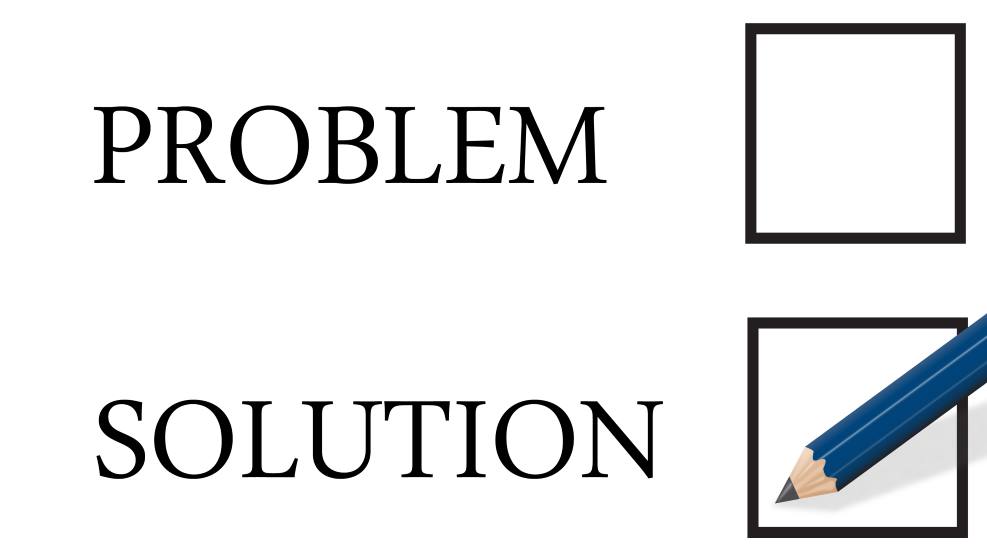This article will highlight a real example of a crisis and the lessons learned from dealing with it. It will provide you with insights and tips for dealing with a disaster when it occurs.
The email came from an anonymous account and was sent to over 600 people in our IT center in Asia, including the complete leadership team and global leaders in Europe and the USA. The email did not waste words; it launched a devastating attack on our center manager.
The communication was a well-rounded attack on his:
- Knowledge of IT Outsourcing – claiming “he knows nothing about technology and cannot even talk on the same level as the employees.”
- Interpersonal skills: ” He shouts and bullies his employees,” and “his favorite people get promotions; everyone else gets nothing.”
- Challenging Ethnicity – “Why do we have to be managed by an Indian when we are all Malaysians? This company does not like Malaysians.”
- Interaction with Global Leadership – “he sucks up to the global leaders, doing everything they say and telling them everything is great in our center when it is not.”
- Global Leadership Attack – “The global VP in charge of all IT centers is a disgusting fat pig who only cares about numbers, not people, and he rules by fear.”
Upon receiving this email, I spoke to one of my most trusted team members at the center and asked her what caused all the outrage in the center.
This situation almost turned into a workplace riot. Let’s take a look at the lessons learned.
1. Don’t Contribute To The Crisis
The story goes as follows. There was a service outage for one of our major customers. The team responsible for fixing the issue had problems restoring the services because there was no backup of the servers’ data. When informed of the problems, the center manager approached the team and started screaming at them, insulting them, and, in general, being rude.
This manager, for a single moment, lost control in a crisis, and the backlash was hard, and the crisis was deepened.
I had met this manager before the crisis, and to me, he was a well-liked and respected leader in our company and the industry in Malaysia. He had no track record of unprofessional behavior and had an exemplary record previously. So, what went wrong?
2. Understand The Snowball Effect Of Losing Control
The email personally attacking this leader came out six months after this event. It took time for the feelings of ill will and resentment to fester and become a significant issue. Those insulted by the attack on their professionalism, knowledge, and maturity spread poison amongst their colleagues and friends to the point where most of the staff were now fearful of this manager. They feared that they would be verbally attacked and insulted if they made a mistake.
When the fear in a workforce grows, this has knock-on impacts on teamwork, collaboration, and the people’s working culture; fear breeds resentment.
If you lose your temper at work and raise your voice, swear or act disrespectfully, the snowballing impact can be hugely negative, and your days are numbered.
3. Know The Causes of Stress & Pressure At Work
Stress and pressure at work can cause you to lose control during crises. Know what causes stress and create a plan to remediate the problems.
| Causes of Stress | Potential Solutions |
| Long Working Hours | Reduce working hours, ask for extra resources |
| Workload Too Heavy | Delegate more tasks, ask for more resources |
| Micro-Management | Speak with the Boss or Team Leader about building their trust so they do not overmanage you. |
| Relationships with Co-Workers | This is a problematic area to fix. Like any good relationship, it takes time to develop. Be sociable, attend work functions, go to team lunches, never smack talk people behind their backs, and behave with integrity. |
| Harassment | Report harassment to human resources or your manager |
| Discrimination | Report any discrimination to HR or your manager |
| Unhappy Customers | Providing poor service to customers can harm your well-being; how can you deliver a better service? |
| Lack of Skills | Make a self-development plan which will place you in a more confident position. |
| Lack of Promotion | If you want a promotion but cannot see the opportunity, speak with your manager. Good managers always need people who want more responsibility. |
| Crisis Incidents | Crisis incidents can trigger you to lose control, so use the checklist below to manage the situation. |

"When You Stop Learning, You Stop Living" SkillShare Makes Learning Easy. Skillshare Is Our #1 Rated Learning Platform With Great Lessons On:★★★★★ Creating: Photography, Film-Making, Music, Graphic Design & Coding ★★★★★ Building: Leadership, Communication, Entrepreneurship & Marketing ★★★★★ Thriving: Personal & Professional Development, Productivity, Time Management "Skillshare is like Netflix for learning. I take a course every time I need a new skill. With over 30,000 courses to choose from, I always have something to learn." Barry D. Moore - Founder: GreatWorkLife.com |
4. Prepare For Crisis By Knowing Your “Go-To” People
If you do not know how to fix a problem, you need to know someone who does.
Your network of relationships is one of the most valuable things you have in any organization. As a leader, manager, team leader, or individual contributor, it is “who you know, not what you know” that resolves a crisis. If you do not know the right people to involve during an emergency, you need to at least know someone who has a great people network to call upon.
5. Understand The Task At Hand
When you are tasked to fix a crisis, the first thing you need to do is try to make a rudimentary assessment of the cause, scale, and duration of the crisis.
Determining the cause of the crisis is critical; is it losing a critical customer contract, a severe drop in sales, or even a virus attack that brings down half of your IT services in a data center?
The scale of the problem is also critical to understand. Does this affect your team, department, or the whole company? Knowing the scale of the problem means that when you move ahead to building the crisis response team, you have vital information about where to draw the staff to potentially fix the issues.
Knowing the estimated duration of the crisis is also important. Can you fix the problems in a few days, weeks, or even months? Knowing this will enable you to set the right expectations for the crisis team and their management, freeing up those resources to work on the issues.
6. Be Clear About the Stakeholders
It is important to know exactly who the most important stakeholders are. A stakeholder is usually a peer or more senior member of staff who has control of the resources needed to do the job or a vested interest in ensuring the crisis is resolved. By including the stakeholders in initial meetings and regularly reporting to them on the status and any requests for resources or finding them, you can secure major backing to resolve a crisis.
7. Assemble the Crisis/Disaster Response Team
The bigger the issues, the higher profile you need your team to be. You must raise awareness across the business units and organizations that there is a big problem. As they say in Alcoholics Anonymous, acknowledging that there is a problem is the first step.
Call and email the managers of the people you will need to utilize to resolve the crisis and provide them with a simple call to action. You need [name] to perform this [action/role] in the team for [percent of their time] for the next [X weeks].
8. Forming the Crisis Resolution Team Meeting
Forming the Crisis Resolution Teamis essentially team-building but under time pressure. But like any team, even this temporary gathering of people needs to go through a process of forming, storming, norming, and performing.
In the first meeting, welcome everyone and state the problem. Then, formally and individually introduce everyone, name, department, and role, and say something positive about each person. If you do not know many of the people, ask them to introduce themselves and go around the table. Take the time to do this; it is important. For additional information, read our article on managing remote teams.
9. Storming The Crisis Team & Understanding the Issue
The second stage of any team’s development is the storming stage. This means the team members will typically try to find a place where they fit in and work through any issues or disagreements they may have.
To power through the storming process, you can use the crisis to help people vent their issues and get clarification.
Explain the crisis and share openly what information you have so far. Ask the team members to add any extra thoughts or information to help with the assessment.
Ensure that the team’s goal is not to apportion blame for the crisis but to resolve it. Avoid blamestorming at all costs.
10. Using Team Work To Resolve Crisis Situations
No serious crisis is ever solved by one person alone. The larger the crisis, the larger the impact, which usually means you need a larger team to fix it.
You can even manage and resolve a crisis without the technical skills to understand it, although having the right skills does help. That is where teamwork comes in.
 Audiobooks Are Food for the Mind Inspiration, Education & Relaxation Have you discovered the joy of listening?★★★★★ Audible: Review Winner - Best for Price, Library Size & Original Content. ★★★★★ Blinkist: Review Winner - Best Audiobook Summary Service. ★★★★ Audiobooks.com: Best For Unlimited Audiobook Listening. "As a 10-year member of Audible, I have a library of 300+ audiobooks. The best thing is, with a few clicks, I can return any book within 12-months. I also subscribe to Blinkist; with 5,000 15-minute audio-summaries, I can consume knowledge and learn new concepts fast." Barry D. Moore - Founder: GreatWorkLife.com |
11. Establish What A Solution Looks Like
So, you have established the scale and cause of the crisis; now, you need to work together to establish the solution. The solution is the main goal of the team.
You can start the solution discussion by going around the table in the meeting and ask individually for potential solutions. Get each person to suggest a solution and what the potential pros and cons of the solution are. Save your opinion for last unless you are already crystal clear on the best solution. My experience is that if you have formed a great crisis team, you will get a diverse set of potential solutions that you had not considered.
Believe it or not, you do not always have all of the answers.
So, let the team speak and add your solution at the end. The roundtable approach to solution creation also allows you to assess the team members and their motivations. This, in turn, allows you to assign tasks and roles more effectively later in the process.
12. Choosing the Right Ethical Solution
Let’s take the car manufacturing industry in 20087. The financial crisis heavily affected the stock market and the demand for new cars. 2008 was a serious crisis that threatened the profitability and existence of the biggest auto assemblers and their suppliers immeasurably.
Here are two solutions that were being utilized:
US Car Makers aggressively reduced the workforce and manufacturing output to maintain profit margin and offset the drop in revenue. Positives: Instant fix and increases the chance of company survival. Negatives: Social impact of mass redundancies on towns, cities, and families.
German Car Makers reduced manufacturing output and costs to offset the reduced demand. Achieve this by giving the workforce an option to reduce working hours by 30% for the next 12 months and keep their job, or 30% of the jobs must go. Positives: Fewer redundancy payments, less social impact, reduced output and costs. Negatives: The automakers did not know when the recession would end; therefore, they were backloading the risk later.
Ultimately, it is widely understood that German car companies had a better solution. When the financial crisis ended, and the global economy started functioning properly again, car demand grew. When the market recovered, Volkswagen stepped in to claim the customers; it could ramp up production and capitalize on new markets because it still had its workforce. Volkswagen is now the world’s biggest car producer. They turned a crisis solution into a competitive advantage.
13. Establish The Path To A Solution
So, you know what the solution is. How do you get there?
Again, there are multiple paths to reaching a goal, and your new team might have a great solution hidden away in their minds. Perform the same roundtable discussion, table the solutions, and choose the best.
The best solution will account for one or more of the following criteria:
- Cost of Implementation
- Timescale
- Resources Available
- Least Negative Impact or Most Positive Impact (Utilitarian decision making)
14. Break Down The Solutions & Assign Team Roles & Tasks
Now you know the solution and the path to the solution, it is time to break it down into manageable chunks. Those chunks are the logical units of the solution. For example, if the solution requires negotiations with Unions on workforce matters, the senior leaders and HR will need to own it. If part of the solution is communicating with customers on contracts or services, sales teams, legal teams, and account managers must own it. Either way, assign the tasks to the right people and be sure they understand they are responsible and accountable for fixing that chunk of the problem.
15. Setup Regular Follow Up Meetings
Any crisis of magnitude is not solved in a single meeting; therefore, it is important to establish a regular date and time that all team members can attend. So, negotiate the regularity and timing of the meeting with all members and ensure you get confirmation from all required participants that attendance is compulsory. Nothing is more annoying than 80% of the team meeting to discuss progress when the team’s important members with critical tasks do not show up. It slows the resolution and impetus of the team.
16. Report Results & Needs Regularly Up To Senior Management
As discussed in one of the first steps, you have your stakeholders, and ensure you communicate regularly with them.
Highlight the following:
- Overall Percent Complete
- What is going well?
- What is not going well, and how to get back on track?
- What is the estimated date of resolution?
17. Job Done – Crisis Resolved
Well done, you did it; the crisis is resolved. Make sure to run a final meeting and send out communications to ensure all are on the same page. Ensure you thank all participants and show appreciation for their work. Spend the time to send feedback to their managers that highlights their contributions. This motivational patting on the back and positive feedback will have the following consequences.
- It will highlight your maturity and appreciation of people and their value.
- People will have an increased appreciation for how you work and who you are.
- People who leave the crisis on a positive note will tell stories about the adversity they overcame and who they were successful with, which will boost their standing and yours.
- In the event of another crisis, those people will be more likely to get involved and support you in succeeding.
If the team does not succeed, no one succeeds.
18. Post-Mortem & Follow-up
In the final meeting, it is worth establishing a post-mortem team to assess how the crisis started and how to avoid it happening again. In my experience with large corporations, this step is often missed. But that is a huge mistake; well-run organizations will seek to avoid any problems that will likely reoccur.
I have seen the same issues reoccurring because the post-mortem recommendations were not followed up with enough support and effort to eradicate the problem.
For example, one company I worked for intentionally underpaid its staff compared to the country’s employment market. This led to a very high staff turnover. The staff turnover of 20% per year meant that in 2.5 years, half the staff had left the company, and by five years, you can expect pretty much everyone to have changed.
This short-sighted thinking has knock-on effects that are unimaginable initially but cause real issues down the line. For example, your customers see that they have different account managers or support contacts every few months. They see they have to build a new relationship with a new person and that the new person does not know enough about their business or service requirements. The problem of knowledge management is at the forefront; you will get brain drain and knowledge drain at an unacceptable rate. So, when your customer finally has had enough because of low service or product quality, they stop the contract.
Then you have another crisis.
Ethics in Crisis Management Summary
Behaving ethically in a crisis is good for all involved and good for business. Integrity is always respected and honored. Those people or companies hiding from the truth or blaming others will eventually be found out. Behave ethically, and it will always work out better.





